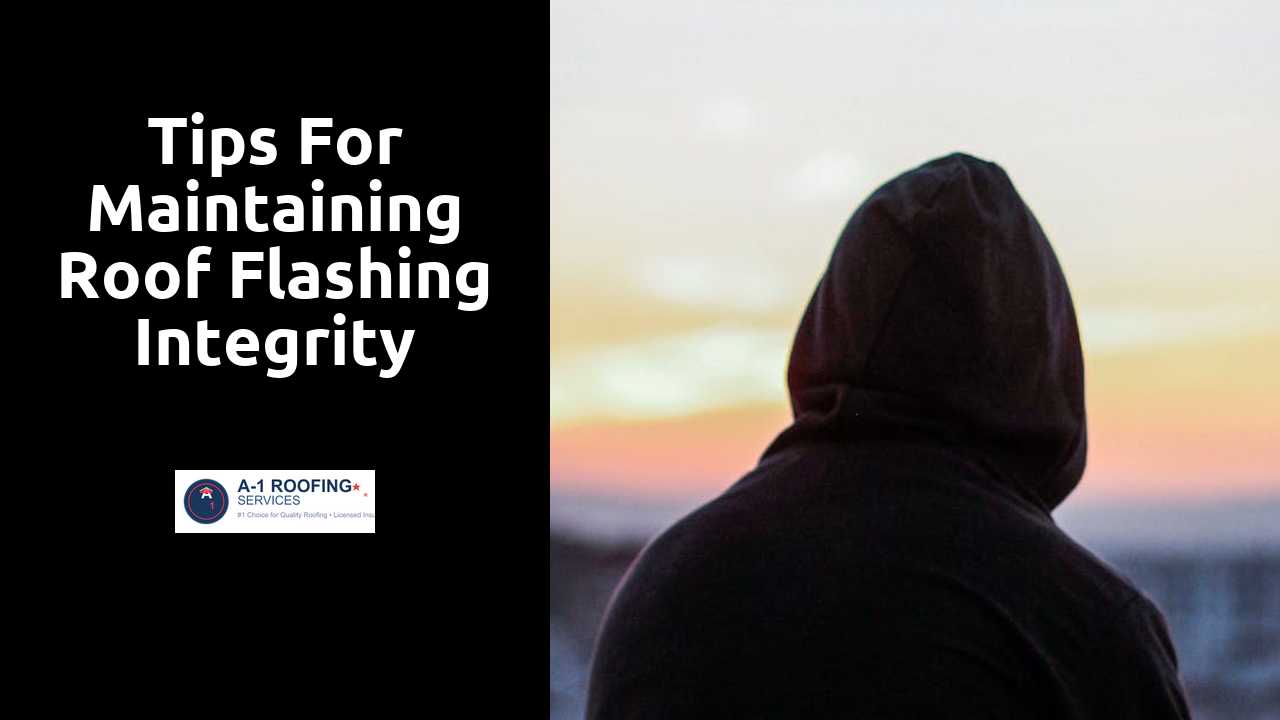
Tips for Maintaining Roof Flashing Integrity
Table Of Contents
When to Seek Professional Help
Identifying when to call in a professional for roof flashing issues can save homeowners from further complications. Signs such as visible gaps between flashing and roofing materials, rust, or physical damage to the flashing itself are clear signals that expert assistance may be needed. Additionally, water stains on interior ceilings or walls might indicate underlying problems that require a professional’s evaluation and repair.
Another crucial factor is safety. Climbing onto the roof can be dangerous, especially for those without proper training or experience. When dealing with complicated roofing structures or uncertain weather conditions, it is wise to seek help. A professional can provide not only the technical skills needed for repairs but also the necessary tools and safety measures to handle the task effectively.
Hop over here to discover more.
Indicators That Require Expert Attention
Visible signs of wear and damage can indicate the need for professional assistance. Cracks, rust, or separation at the seams can compromise the integrity of the flashing. If you notice water stains on your ceilings or walls, this could also mean that the flashing is failing to provide protection against moisture intrusion. These issues can lead to more extensive structural damage if not addressed promptly.
Another key indicator is the presence of mold or mildew in areas close to the roofline. This suggests that moisture is getting trapped due to inadequate flashing. An increase in energy bills may also signal problems with insulation and ventilation, often linked to flashing issues. In such cases, enlisting the help of a professional ensures a thorough inspection and appropriate repairs.
Importance of Proper Installation
The correct installation of roof flashing plays a crucial role in preventing leaks and water damage. Flashing acts as a barrier, channeling water away from vulnerable areas, such as chimneys, vents, and roof valleys. If installed improperly, it can lead to various issues, including mold growth and structural damage, which can be expensive to repair. Taking the time to ensure that flashing is secured properly and aligned with roofing materials is essential for long-lasting protection.
Attention to detail is vital during the installation process. Flashing should be placed under shingles or tile and should extend adequately to prevent water from seeping underneath. Using high-quality materials is also important, as inferior flashing can deteriorate quickly under harsh weather conditions. Proper flashing installation not only safeguards the roof but also enhances the overall value of the property, making it a worthwhile investment for homeowners.
Best Practices for Installing Roof Flashing
Proper alignment of roof flashing is crucial for preventing water intrusion. It should be installed to ensure water flows away from seams and joints. Overlapping sections should follow the manufacturer's recommended guidelines, usually with a minimum overlap of four inches. Using the right type of flashing material is essential. Different roofing materials require specific types of flashing to maximize effectiveness and longevity.
Sealing the edges securely is another vital step in the installation process. A quality roofing sealant can help create a watertight barrier. Fasteners used for securing flashing should be corrosion-resistant to withstand exposure to the elements. Regular inspections during and after installation help confirm that flashing is correctly positioned and functioning as intended.
Seasonal Maintenance Tips
Regular seasonal maintenance is essential for preserving the integrity of roof flashing. Inspect for any signs of damage, including cracks, rust, or loose sections. Clear away debris, such as leaves or branches, that may have accumulated around the flashing. Debris can trap moisture and lead to corrosion or leaks, compromising the roof's overall protection.
Before the onset of severe weather, it is advisable to apply a sealant to the flashing seams. Look for high-quality sealants specifically designed for roofing applications. Additionally, check for proper alignment and ensure that all pieces are tightly secured. Addressing these aspects proactively will help maintain your roof’s effectiveness against water intrusion during heavy rain or snow.
Preparing Your Flashing for Harsh Weather
Regular inspections of roof flashing are essential to ensure its durability against severe weather conditions. Before the onset of harsh weather, homeowners should examine the flashing for signs of wear, such as cracks, rust, or loose materials. Addressing these issues proactively can prevent water intrusion and subsequent damage to the roofing structure. A thorough inspection also allows for necessary repairs to be made ahead of time.
It is advisable to clean the flashing, removing debris and buildup that can trap moisture. This practice helps to minimize the risk of deterioration over time. In areas prone to heavy snowfall or ice, applying a sealant can offer additional protection against the elements. Ensuring that the flashing is properly secured can help it withstand strong winds and torrential rains, safeguarding the home throughout the changing seasons.
Related Links
Addressing Common Roof Issues Before They EscalateBest Tools for Effective Roof Preventative Maintenance